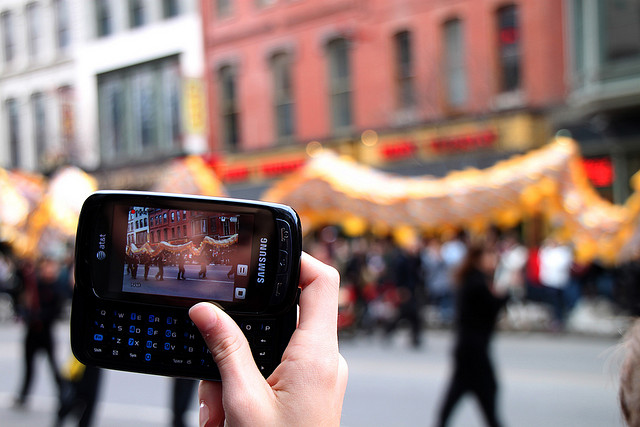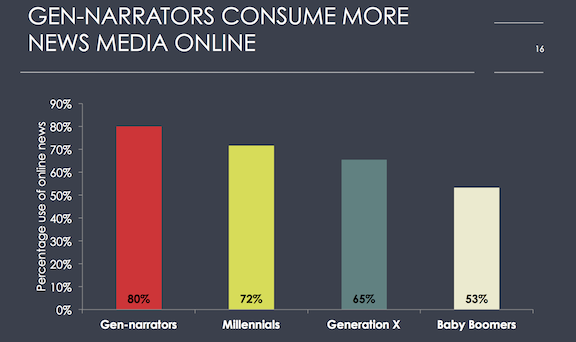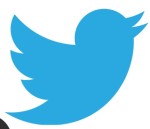Look at that picture, the phone is from practically 10 years ago.
Tech evolves fast, and the generation most comfortable with it would have to be the one that grew with it – the millennial generation. They make up around a third of consumers these days, and their usefulness to retailers is immense. I’m not great at introductions, so let’s just jump straight into why and how to best market towards them.
Generation generalizations
Like any other generation for the most part, nobody really knows the exact time range where a person falls under the category “millennial,” but it’s safe to assume it’s anybody born between the early 1980’s and early 2000’s. They follow Generation X (and are sometimes called Generation Y), which ranges between the 1960’s and early ’80’s, who was preceded by the baby boomers born between 1946 and the early 1960’s.
Given that millennials grew up with technology around them thanks to the tech explosion in the past 30 years, the potential for them to purchase on your online store is greater than any previous generation. And if that’s not enough to convince you of their importance, keep in mind that they’re the next wave of consumers with growing purchase power, and they account for a quarter of the US population.
They’re typically described as “hyperconnected.” The vast majority of millennials are active on social channels, with 87% on Facebook, 53% on Instagram, 37% on Twitter and 34% on Pinterest according to social media research by Pew. To push that point even further, around 95% of millennials believe their friends to be credible sources on product information, which means every share matters. Social’s clearly important, but let’s see just which of those people profiles matters most.
The Gen-Narrator
According to a survey by The Economist of nearly 90,000 millennials, Gen Xers, and baby boomers, there is a specific subset of millennials slotted into a group called “gen-narrator,” which stands for generation narrators. These are the cream of the crop when it comes to targeting the Y generation. That’s because they run contrary to most stereotypes, like being lazy and narcissistic, with one exception; they are indeed hyperconnected, which can be used to your advantage.
Gen-narrators are generators of attention. They’re super affluent in tech, they feast on all types of content, and they tend to be highly engaged with favored brands, audiences, and their own social networks. If you’re able to secure their interest and support, you’ve not only got a interested customer, but you have a customer that can take your brand to a wider audience – and we all know that word of mouth can bring in new customers that already trust you by extension.
Most retailers already understand the importance of social media. In fact, it’s no longer really a “millennial” thing since every generation out there is on it at this point to some degree. But it’s important to remember content on your blog as well. If you aren’t content marketing already, you should be. Not only does it influence results on the search engines over time, it’s another way to engage with your customers, particularly those that lap up content, like gen-narrators. Write about your products, industry, business, even feature some customers. It’s one thing to engage through posts and shares on the socials that gen-narrators enjoy, and another to have actual site content that they can take to their own social channels and expand your outreach.
Millennial is synonymous with mobile, mobile synonymous with multichannel
For all the generalizations about any generation, we can be sure that the millennials are the most mobile. More than 85% of them own smartphones. You’re likely already aware, but having a mobile optimized site is of supreme importance, especially considering the amount of traffic that’s arriving via mobile devices nowadays. And because of that mobile focus, a multichannel experience is incredibly important. A seamless multichannel experience will work wonders on both opening the door to sales opportunities and increasing brand loyalty.
This means being accessible on social channels, mobile channels, and your site. If a customer tweets, be prepared to respond. If a customer visits your site and sends an inquiry, be at the ready. When you’ve got a branding promotion in the works, make sure it takes each channel into account. Being engaged with your customers is critical, and they’re engaging in a variety of ways on a variety of devices, from phone to TV to iPad and laptop, thanks to mobile.
The fuzzy stuff
Perhaps the greatest opportunity with millennials is their lifetime value. They’re very loyal to brands they’ve developed a relationship with, and, more importantly, they’re young. If retailers are able to establish connections with millennials, they’re essentially tapping into a customer base whose wealth and income is only going to go up in time.
That said, connecting with them is about more than identifying and shaping your consumer facing marketing to fit a generation.
One of the most important aspects to understand about the millennial generation, or any generation for that matter, is that each individual is unique. A person isn’t and should not be just a millennial, or a baby boomer, or a latchkey kid. Those words define generations – groups of people that have endured similar experiences and environments as they’ve aged. If you want to truly market expand your brand and outreach, treat every customer as an individual with the potential to positively impact your business, whether it’s through a review, a like, or a sale.




